 Petzlover
Petzlover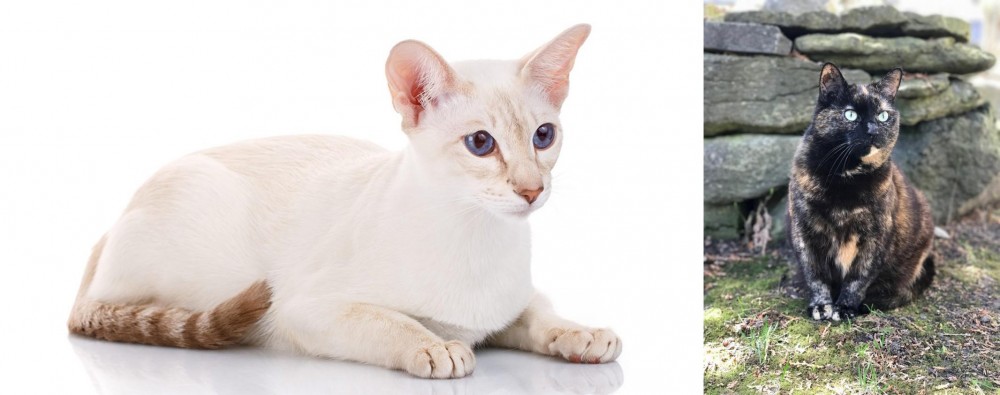 Colorpoint Shorthair is originated from United Kingdom but Tortoiseshell is originated from United States. Both Colorpoint Shorthair and Tortoiseshell are having almost same weight. Colorpoint Shorthair may live 4 years less than Tortoiseshell. Both Colorpoint Shorthair and Tortoiseshell has same litter size. Colorpoint Shorthair requires Low Maintenance. But Tortoiseshell requires Moderate Maintenance
Colorpoint Shorthair is originated from United Kingdom but Tortoiseshell is originated from United States. Both Colorpoint Shorthair and Tortoiseshell are having almost same weight. Colorpoint Shorthair may live 4 years less than Tortoiseshell. Both Colorpoint Shorthair and Tortoiseshell has same litter size. Colorpoint Shorthair requires Low Maintenance. But Tortoiseshell requires Moderate Maintenance
 The Colorpoint Shorthair is a Siamese cat that came about when the Siamese cat was used with the red American Shorthair to bring about new colors.
The Colorpoint Shorthair is a Siamese cat that came about when the Siamese cat was used with the red American Shorthair to bring about new colors.
The actual name is given by the CFA or Cat Fanciers’ Association to refer to pointed cats that have Siamese parents and that have many colors other than the usual 4 Siamese colors which are blue, lilac, seal, and chocolate.
It was in the 1940s and 1950s that cat breeders in the UK and the USA wanted to develop a Siamese cat with red points as opposed to the traditional Siamese colors. It was in 1964 that these red and cream Colorpoint Shorthairs were awarded championship status with the Cat Fanciers’ Association.
Today, different cat registries recognize the Colorpoint Shorthair as a separate breed while others see it as a variation of the Siamese.
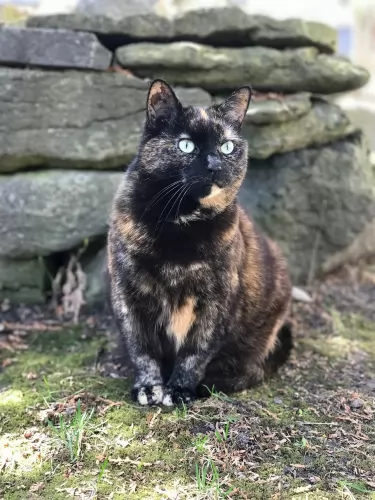 The Tortoiseshell isn’t a cat breed but rather a coat coloring of cats. It just happens that most tortoiseshell cats are females.
The Tortoiseshell isn’t a cat breed but rather a coat coloring of cats. It just happens that most tortoiseshell cats are females.
Known as Torties, these cats always have a couple of colors such as red and black as well as some fawn.
Tortoiseshell cats with the tabby pattern are referred to as Torbie cats. Tortoiseshell markings appear in many different breeds.
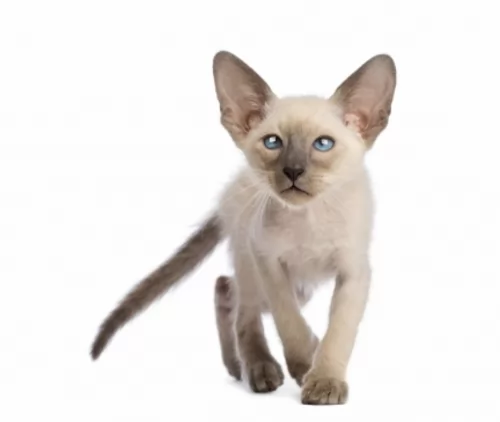 The Colorpoint Shorthair is a medium-size cat that typically weighs between 2 to 4kg and is nicely muscled. This is a long cat with legs that are long and slender too.
The Colorpoint Shorthair is a medium-size cat that typically weighs between 2 to 4kg and is nicely muscled. This is a long cat with legs that are long and slender too.
The coat is short and glossy, light-colored with darker extremities. Colors can be Cream Point, Red Point, Cinnamon Point, Seal Point, Blue-, Lilic- and Chocolate Point among others. The cat is well known for its mesmerizing almond-shaped blue eyes.
This sweet agile, athletic cat will be a delight in your home as he is highly intelligent and can easily learn a few basic commands but he is also friendly, playful, and loving. They’re social, outgoing cats too and when he’s not amusing himself, he will happily come and lounge about close to where his beloved human companions are.
On the other side of the coin, these cats can also be somewhat nervous and sensitive and they won’t adapt easily to a change in environment and lifestyle. It is why you have to choose your pet carefully and understand that owning a pet is a commitment of some 15 years or so.
Like the Siamese cat, these felines can be very vocal and they let you know when they want your attention.
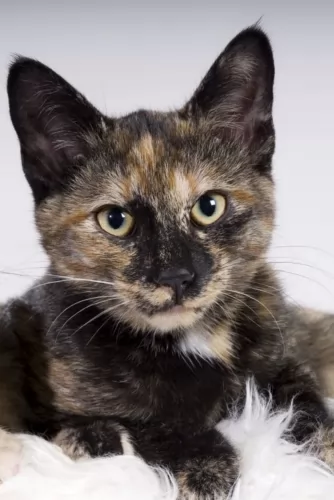 Tortoiseshell cats are your regular-sized cats. They can be medium-sized to large and weigh anything between 3 and 7kg.
Tortoiseshell cats are your regular-sized cats. They can be medium-sized to large and weigh anything between 3 and 7kg.
They come in different colors and patterns. The colors are essentially cream, fawn, black, tan, and orange. Tortoiseshell markings appear in all the different cat breeds.
Because the tortoiseshell cat is a color and not a cat breed as such they can be different sizes and shapes.
Tortoiseshell cats aren't a specific breed, but there are people that believe that just the color of the coat is indicative of the personality – feisty and lively.
People who have owned these cats say they have a sassy temperament and can even be just a wee bit aggressive sometimes with their strong-willed attitude.
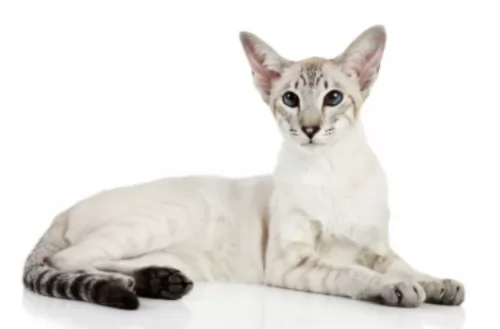 Choose the wonderful Colorpoint if you want a cat that isn’t cold and independent. With this cat you have one that is more like a companion and looks forward to being around you.
Choose the wonderful Colorpoint if you want a cat that isn’t cold and independent. With this cat you have one that is more like a companion and looks forward to being around you.
This is a loyal and loving cat who wants to be part of the human family and he wants to be involved in your life.
He suits first-time cat owners, those with children and pets in the home as well as being an excellent pet for seniors – anyone in fact, who is willing to bestow on him the love and affection he craves.
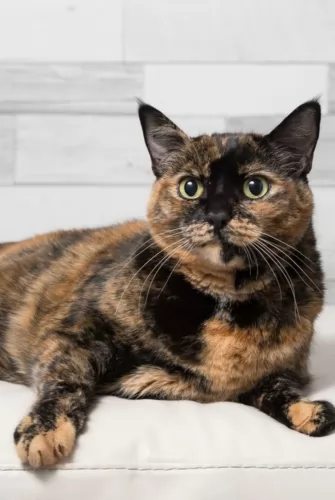 Your Tortoiseshell is a beautiful cat and fondly referred to as a Tortie. It has a coat similar to the coloring of a tortoise, but the temperament of the cat will rely much on your own personality and the lifestyle you provide him with.
Your Tortoiseshell is a beautiful cat and fondly referred to as a Tortie. It has a coat similar to the coloring of a tortoise, but the temperament of the cat will rely much on your own personality and the lifestyle you provide him with.
They are fairly vocal, but because this cat isn't a breed but rather a coat color, nobody can say precisely how it will turn out in personality.
One thing is sure, if you offer your Tortoiseshell lots of love and care, you can be sure of a wonderful feline friend.
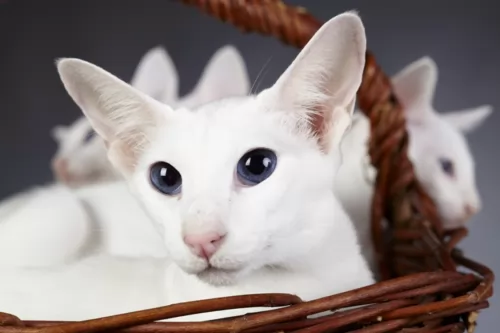 When it comes to the health of these beautiful cats, you may well find similar health issues as what affects the Siamese, some of which are asthma or bronchial disease, congenital heart defects and lymphoma among others.
When it comes to the health of these beautiful cats, you may well find similar health issues as what affects the Siamese, some of which are asthma or bronchial disease, congenital heart defects and lymphoma among others.
Lymphoma is cancer in the lymphocyte cells. Your cat will be lethargic and you will need to get him to the vet and provide the vet with a medical history of your cat. Lymphoma is believed to be associated with exposure to feline leukemia virus as well as the feline immunodeficiency virus.
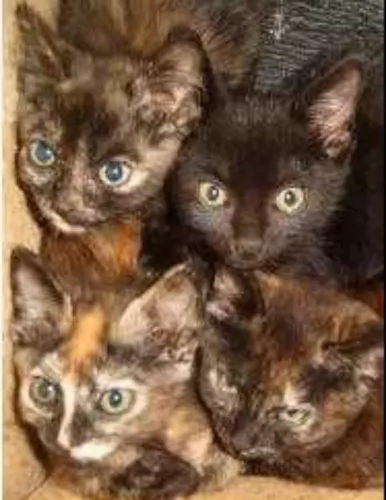 Your cat's health depends on good food. If your finances allow, choose a high-quality food. Check the label for the feeding guidelines.
Your cat's health depends on good food. If your finances allow, choose a high-quality food. Check the label for the feeding guidelines.
Always remember that your cat's age - kittens, adults, and senior cats have different nutritional needs. Sick cats will require a different type of food. Watch your cat's weight because being overweight can bring on a host of illnesses such as diabetes.
A cat has to have access to fresh drinking water every day and night to remain healthy.
Ensuring your feline friend is exercised both mentally and physically is important for good health.
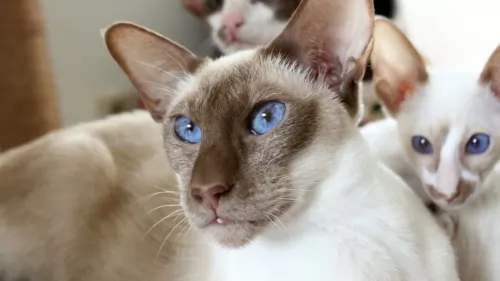 Rember that your Colorpoint Shorthair is a long, lean, musculac cat and for health purposes, you want to ensure a good diet of the best cat food there is. There are some excellent commercially manufactured cat goods available and it is wise to get to know the ingredients as meat and protein is high on the list. Cats are carnivoes and it is imperative to feed your cat high quality protein. When in any kind of doubt, speak to your vet about the best cat food available for your special feline friend.
Rember that your Colorpoint Shorthair is a long, lean, musculac cat and for health purposes, you want to ensure a good diet of the best cat food there is. There are some excellent commercially manufactured cat goods available and it is wise to get to know the ingredients as meat and protein is high on the list. Cats are carnivoes and it is imperative to feed your cat high quality protein. When in any kind of doubt, speak to your vet about the best cat food available for your special feline friend.
The short coat requires brushing once a week.
Check your cat over for any unusual lumps. Look at his eyes, check inside his ears for signs of redness and infection and check inside his mouth for signs of bad teeth as this can cause him terrible pain.
Provide a litter box and keep it scrupulously clean.
Have your cat spayed or neutered to avoid unwanted kittens and to also promote better health for your cat.
Provide your cat with a warm bed, food and water bowls, and stimulating toys.
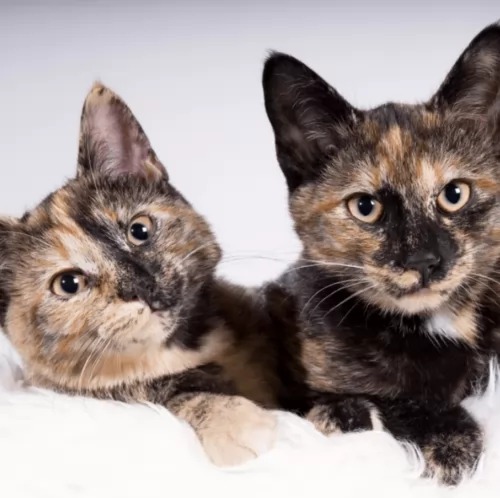 Cats are known to be independent but they still need your care and attention. Before you take a Tortoiseshell into your home, prepare for his arrival.
Cats are known to be independent but they still need your care and attention. Before you take a Tortoiseshell into your home, prepare for his arrival.
Make sure you have food and drinking bowls ready, a comfortable bed, a stylish cat collar and tag of identification, cat accessories such as a brush, toys, and some top-quality cat food.
If you work all day, maybe it would be a good idea to get 2 cats as some cats can get very lonely during the day, and adding a companion can be an excellent solution for his loneliness.
Always be in touch with the vet if you see that your cat isn’t behaving in his usual way.
Your cat will need to be taken for check-ups and also all the necessary cat vaccinations required to ward off deadly cat illnesses.
Provide your cat with a litter box and make sure you remove the cat feces every day.
Provide your cat with toys. Choose them carefully to keep your cat happy and amused. Buy a scratching post too as all cats want to scratch and you want to save your furniture from your cat using it to scratch on.